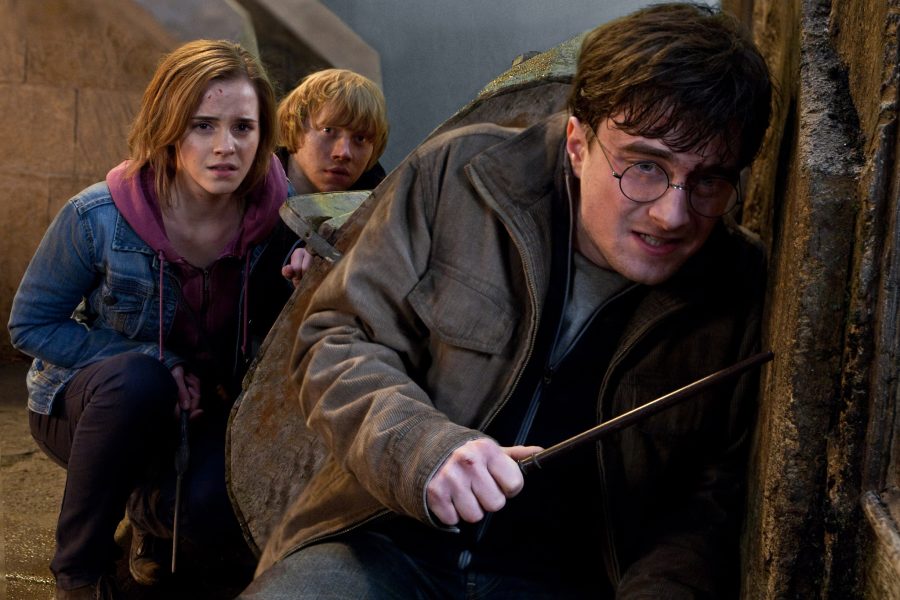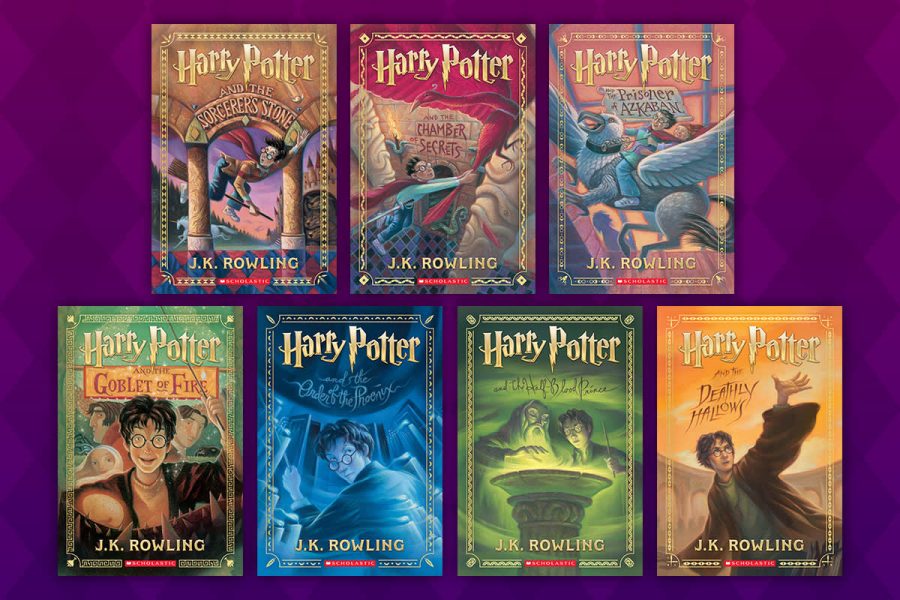
Harry Potter, 15 years on: From frenzied anticipation to franchise fatigue

In July 2007, a wave swept across bookstores in India. The frenzy of anticipation was sparked by full-page spreads and puff pieces in both English and regional newspapers on the highly-anticipated release of the seventh and final Harry Potter novel, Harry Potter and the Deathly Hallows.
People flocked to bookstores to get their hands on the final few pages of Harry Potter’s odyssey, creating long queues that, in South Mumbai, snaked past Kemps Corner. The readers were from all walks of life, sharing looks of joy with their fellow countrymen and clutching their dusty and sweat-covered purses filled with cash.
Like pirates, they barged into the bookstores. Booksellers stood behind their counters, helplessly watching the black-red Bloomsbury volumes being ransacked from their shelves. Unlike other books, the Harry Potter tomes were not put into satchels. They were either already being read, flipped open and held ajar, or cradled in one arm while the other hand fidgeted with the glass door handle to exit the bookstore, buzzing with the nervous energy of a million bumblebees.
That was fifteen years ago. It was one year before the year of AR Rahman, some months before the global financial crisis, and the very year Doris Lessing won the Nobel Prize for Literature. It was also three years before the final Potter movies (as we believed at the time), distributed by Warner Bros. Pictures.
Also read: ‘Beef’ review: A darkly humorous exploration of road-rage-fuelled feud, repressed grief
We’ve since had a spate of lore from the Potter universe unleashed on us, such as the extended prologue that is The Cursed Child, lauded at the Olivier and Tony Awards, and a string of movies set in a pre-Harry Potter timeline, which had the majesty and captivation of a Michael Schumacher skid mark.
Box-office collections seldom indicate cinematic achievement. Prisoner of Azkaban, the third installment, helmed by future Academy Award-winner Alfonso Cuarón, hardly set the ground ablaze in 2004, and yet its place as the keystone for the series’ transition to maturity is biblical. But something has to be said about diminishing returns. The last few movies in the Fantastic Beasts franchise have had a most unremarkable run.
In their throes comes the announcement from HBO, the Warner-owned television powerhouse, that the books are about to be adapted into a decade-long TV series. One would expect jubilant thronging in the streets. Instead, there are brickbats being hurled by those in the ponderous core of the fandom, this million-strong whirl of the faithful.
A culture of mediocrity
The movies’ central troika of Daniel Radcliffe, Emma Watson and Rupert Grint have since, in a sense, moved on. Radcliffe has made a career out of acting in oddball films, most memorably as a farting corpse in Swiss Army Man (2016), directed by the Oscar-winning dyad behind Everything Everywhere All At Once (2022).
Watson has had a more graceful turn of roles, mostly in period dramas, always a dignified presence. The curse of the franchise is a hard one to ward off, especially when your face is burned into collective memory, becoming a public record of our most sensitive surrenders to the madness of a fandom.
And yet, as the actors reclaimed their personalities outside the Potter universe, the universe itself descended into cultural miasma. Without their familiar presence, even the likes of Eddie Redmayne and Johnny Depp and Jude Law couldn’t instill the necessary confidence that precedes the suspension of disbelief. Potter and his friends, like all characters who had the fortune of having seven books written around them, had a patent flesh-and-bones realness.
Also read: How ‘Chandralekha,’ a 1948 Tamil film, paved the way for big-budget Indian films
Without their necessary grounding in literature, the Fantastic Beasts films floundered. Like its predecessors and influences, the Harry Potter cinematic universe suffers from the jinx of plot exhaustion, and the faux pas of overstaying its welcome. It is certainly not the first universe that is starting to wear out its once-fervent fandom.
It’s a list. In the format of name of series (number of associated films), consider Alien (8), Blade Runner (3), Fast and Furious (9), Godzilla (36), Halloween (12), Jumanji (4), Jurassic Park (5), Men in Black (4), Planet of the Apes (9), Predator (6), Rocky (8), Star Wars (11), Terminator (6), The Matrix (4), The Mummy (6), The Spider-Man franchise (9), The X-Men franchise (13), and Transformers (6).
Save the Spider-Man movies, which continue to reinvent the ways of the game when they’re at their surest, all other franchises have tapered to awkward critical receptions. AO Scott of the New York Times called for The Mummy (2017) to receive a quick burial.
On the other hand, many of these films were studio tentpoles at their peak. The incentive to milk the udders of cultural behemoths such as these is undeniable, yet it might be time to take a leaf out of Bill Watterson’s book, who famously stopped drawing the beloved Calvin and Hobbes comics cold turkey, and has let the lines and pigments and precocity simmer merrily like a true classic.
Cinema as alchemy
What are movies even about? One narrowly avoids doe-eyed sentimentality (“Human stories! Humanity! The sentient arcana of planet earth!”) to see what Martin Scorsese has to say through his documentary, Italianamerican (1974). A portrait of his mother, matriarch par excellence, her fast-talking, myth-making, sauce-cooking frame holds up the Scorsese household, and also lends Martin his characteristic inspiration of Italian middle-class concerns and Catholic ethics.
His movies are personal to him, especially when he teases out a grimy thread from his life in New York, New York to festoon his stories. That trademark grittiness, that zany velocity of his montages that approximate his mother’s freewheeling, intercutting sentences about her family’s vacation and the coy aloofness of his father. They are simultaneously personal and meant for the world to see. A vulgar act for every private person.

Movies are the last great move forward in the great human storytelling tradition. Scholars argue that each epoch in the history of film (a blip when compared to the vast timeline of humans expressing themselves in speech and mud and ink) is characterized by the social disquiets that affected the filmmakers of their eras. Or what cause they espoused. For instance, when Fritz Lang had to leave warring Germany for the USA, Leni Riefenstahl continued to make Nazi propaganda films.
While the US funded its own propaganda, most famously through Casablanca (1942), convincing its people of the worthiness of the war effort, communist sympathies from heavyweights such as Charlie Chaplin and Dalton Trumbo were suspected and shunned. Red scare writ large, Dr Strangelove (1964), and The Manchurian Candidate (1962) were apprehensive of communism.
The genre of the blockbuster, fathered by Steven Spielberg through Jaws (1975), is perhaps the one people blame the most for the disenfranchisement of topical diversity that the franchise era has let loose, but this would be too simplistic, a dichotomic reevaluation of cinematic history into emblematic top-grossers and obscure personal manifestos. That is not the case.
When Spielberg stepped out of his special effects workroom to stage hefty dramas such as Schindler’s List (1993), Amistad (1997), The Color Purple (1985), or Munich (2005), they were both this and that, both populist and personal, both surgically-accurate market maneuvers and demands of a conscience. It is this cinematic alchemy that is sorely missing from the cinema of the 21st century.
To new stories
In the intellectual property (IP) law course taught to undergradudates, I learnt that copying the content and characters of a work that you haven’t authored and own no rights to is …. absolutely permitted, on the condition that your use is “transformative”. Transformative use is where you transplant the characters to serve a radically different purpose, or to parody the film or work, or to issue satirical missives.
By this standard, the franchise films of today stand in violation of their own creation myths. Critics have panned the recent crop of such movies for their cyclical storytelling, weary retreads of a tired narrative, chasing McGuffins of the tallest order years in a row. This is certainly not the limitation of a universe, but in its flawed execution.
For HBO to not consider producing a much-vaunted series on what are called the “Marauders”, or Harry Potter’s father and his friends, and their time at school, and instead steer a retelling of the Ur-story is certainly an example of the same. It is not entirely impossible to make a contemporary point, or tell a more relevant story using the same IP as before.
Andor (2022), a Star Wars-universe TV show, has been welcomed as a good show about the evils of ideological control, taking cues from the history of Joseph Stalin, commentating from the sidelines of the democratic projects in the USA, Brazil, India. Aswin V. N., writing for The Hindu, calls it a “layered Foucaultian critique of fascism”. This is one way forward.
Also read: Murder Mystery 2 review: A fun-filled fare, with desi flair, Aniston-Sandler synergy
Another way is for studios to realize the limitations of their IP. Why viewers champion a film or do not care enough is the stuff of behavioral economics. Sequels and spinoffs are expected to make money because they bank on nostalgia and collective excitement, the human need to know and belong, not especially because they aim to tell an independently meaningful story in a warped version of their original contexts. It is not honest to argue that viewers would not watch a “meaningful” film without the sugary additive of recall value and rehashed IP. And even if meaningfulness is not the raison d’etre of cinema, it can and should look to invest in new stories.
A good example of this model of cinema were the Disney-Pixar movies from the early aughts — Cars (2006), Ratatouille (2007), Wall-E (2008), even Up (2009), excellently-marketed original movies about the ways of the world, that did follow in the Spielberg footprint (of the marriage of populism and that twee articulation of “meaningfulness”). Even Pixar’s creative engines have slowed down, Lightyear (2022), a Toy Story spinoff, being an unintended satire of dashed invention at the studio.
Most of the franchises noted above began with a once-in-a-lifetime commingling of finances, cultural phenomenon and astute marketing, the ingredients for true psychological domination. Closer to now, so many new series are abandoned for no reason. A bevy of films are shoddily marketed and never accrue reception equal to their actual worth. A misplaced assessment of what an audience wants is at the heart of this state of affairs.
The inertia in kickstarting a universe is heightened because of the existing culture that is drifting by on the shoulders of established, if rusty, IP, and newer worlds appear to be too fragile, too different, too something, to capture audience’s attention in the same way. Audiences must be fed on a constant drip of familiar, digestible sameness, studio executives seem to think. The opposition to the televised Harry Potter series is both a counterstatement and a hope for the future.


